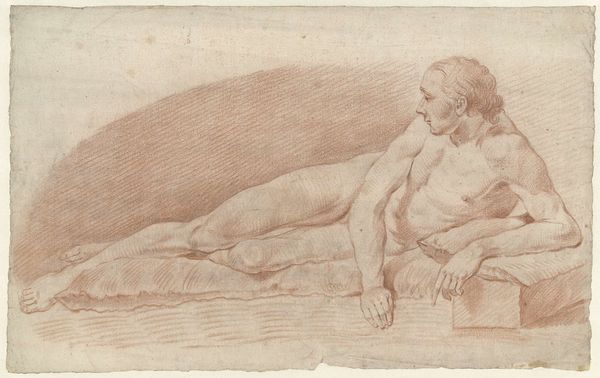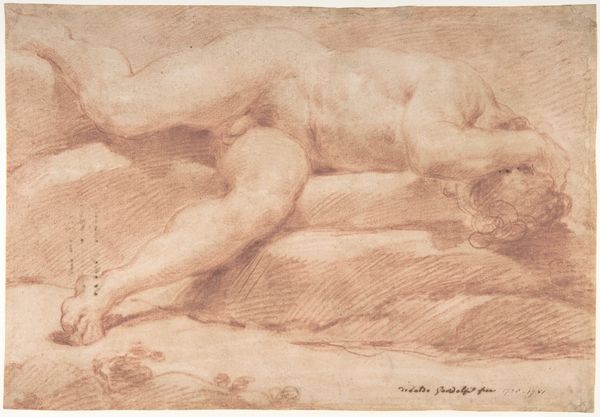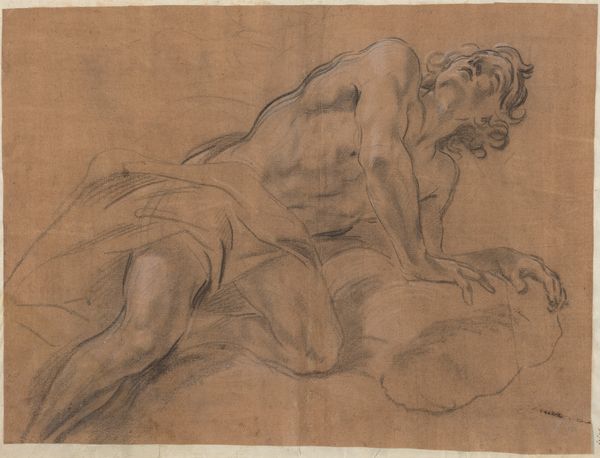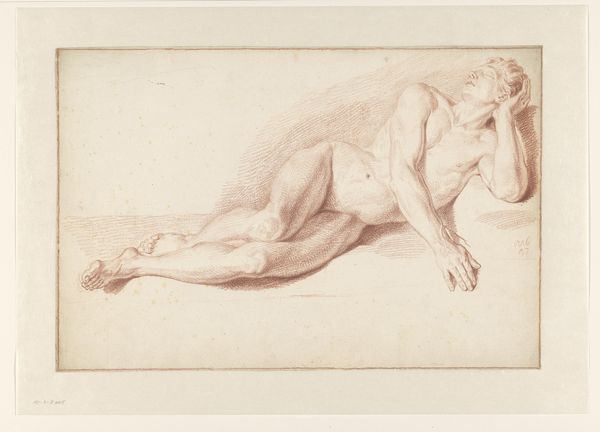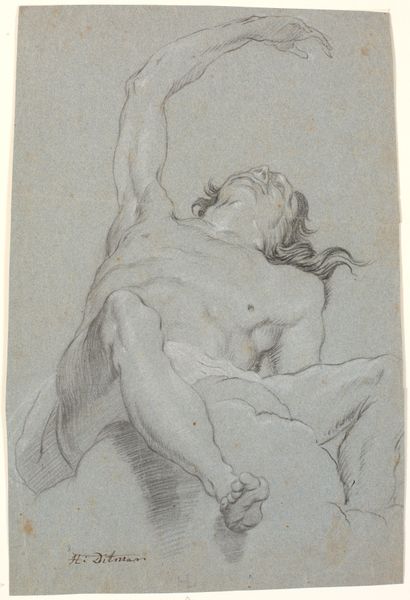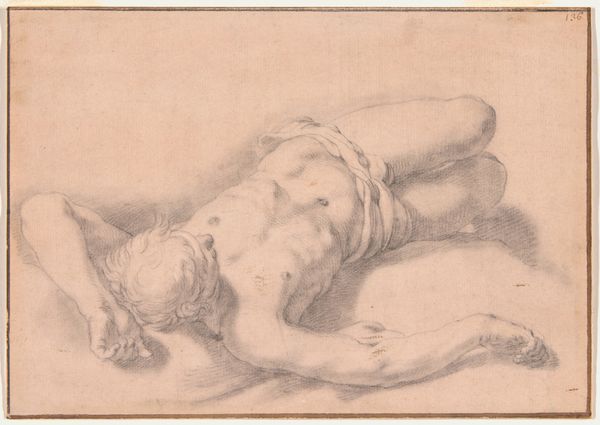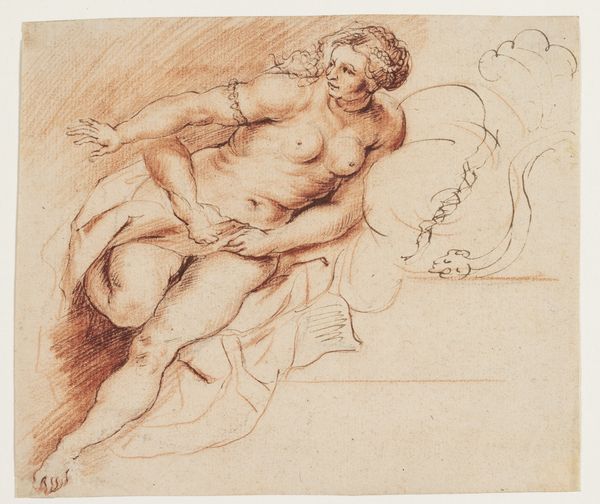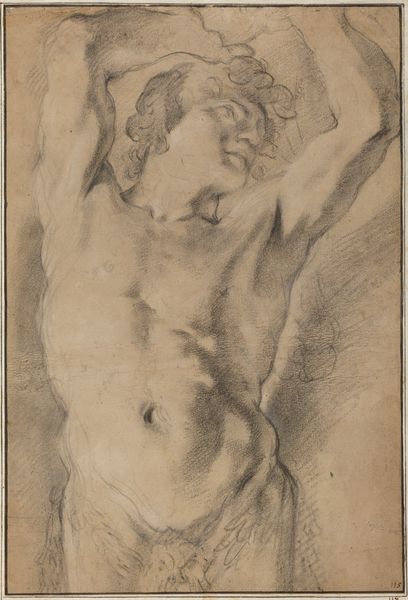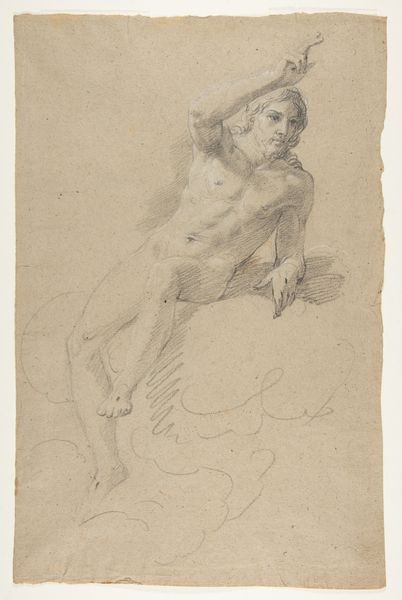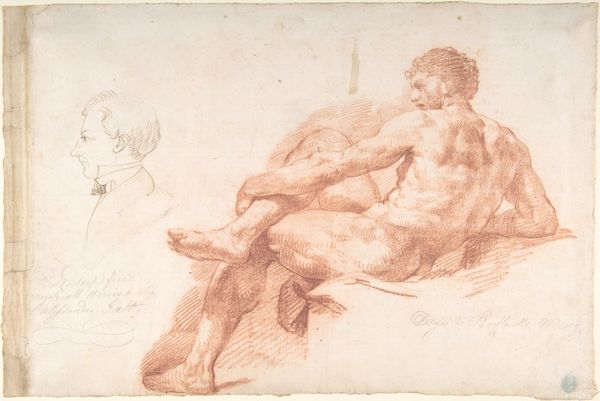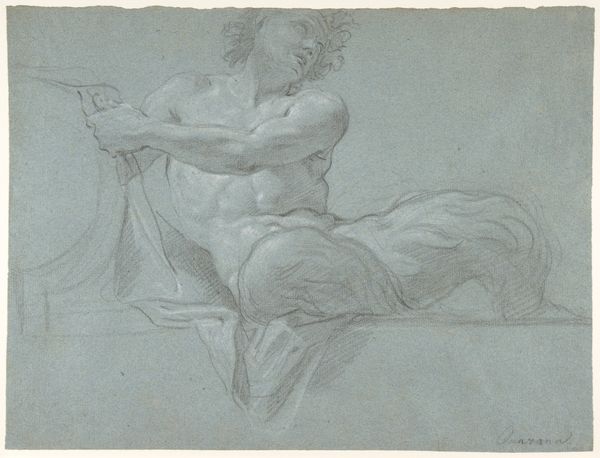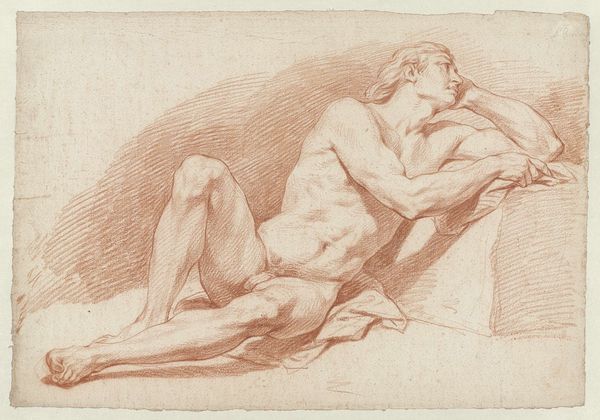
drawing, print, oil-paint, pencil, charcoal
#
drawing
#
baroque
# print
#
oil-paint
#
charcoal drawing
#
figuration
#
pencil drawing
#
pencil
#
charcoal
#
academic-art
#
nude
Dimensions: 7 7/16 x 13 1/8in. (18.9 x 33.3cm)
Copyright: Public Domain
Editor: Here we have "A Wind God," a charcoal and pencil drawing by Pietro da Cortona from 1669. What immediately strikes me is the dynamic tension between the detailed musculature of the figure and the swirling, almost chaotic lines behind him. What do you make of this piece? Curator: Note how the artist’s control over line and form allows for such expression. The meticulous rendering of the figure contrasts with the implied movement indicated by the surrounding lines, a deliberate juxtaposition to amplify the sense of the wind god’s power. How does the orientation of the figure affect your reading? Editor: I hadn't thought of that. Because he is reclining and gazing up and away, it conveys the feeling that this is not a god acting, but perhaps at rest, or waiting. Do you think that was a deliberate choice? Curator: Observe the academic approach; the detailed rendering adheres to principles established in art academies. There is anatomical exactitude in the rendering of the arm and torso, yet the god remains incomplete. Consider how this tension shapes meaning within the image. Does that tension add meaning or conflict to your interpretation of this figure? Editor: That incompleteness creates a sense of anticipation and potentiaity for me; I see your point. It's a being that's about to act or be. The level of technical skill on display here, even in the incomplete areas, really makes it captivating. Curator: Indeed, and through our analysis, we may learn how an artwork communicates meaning beyond mere representation. The arrangement, form, and quality of lines may hold significant weight. Editor: This has opened up a whole new appreciation for interpreting visual choices, thank you.
Comments
No comments
Be the first to comment and join the conversation on the ultimate creative platform.
